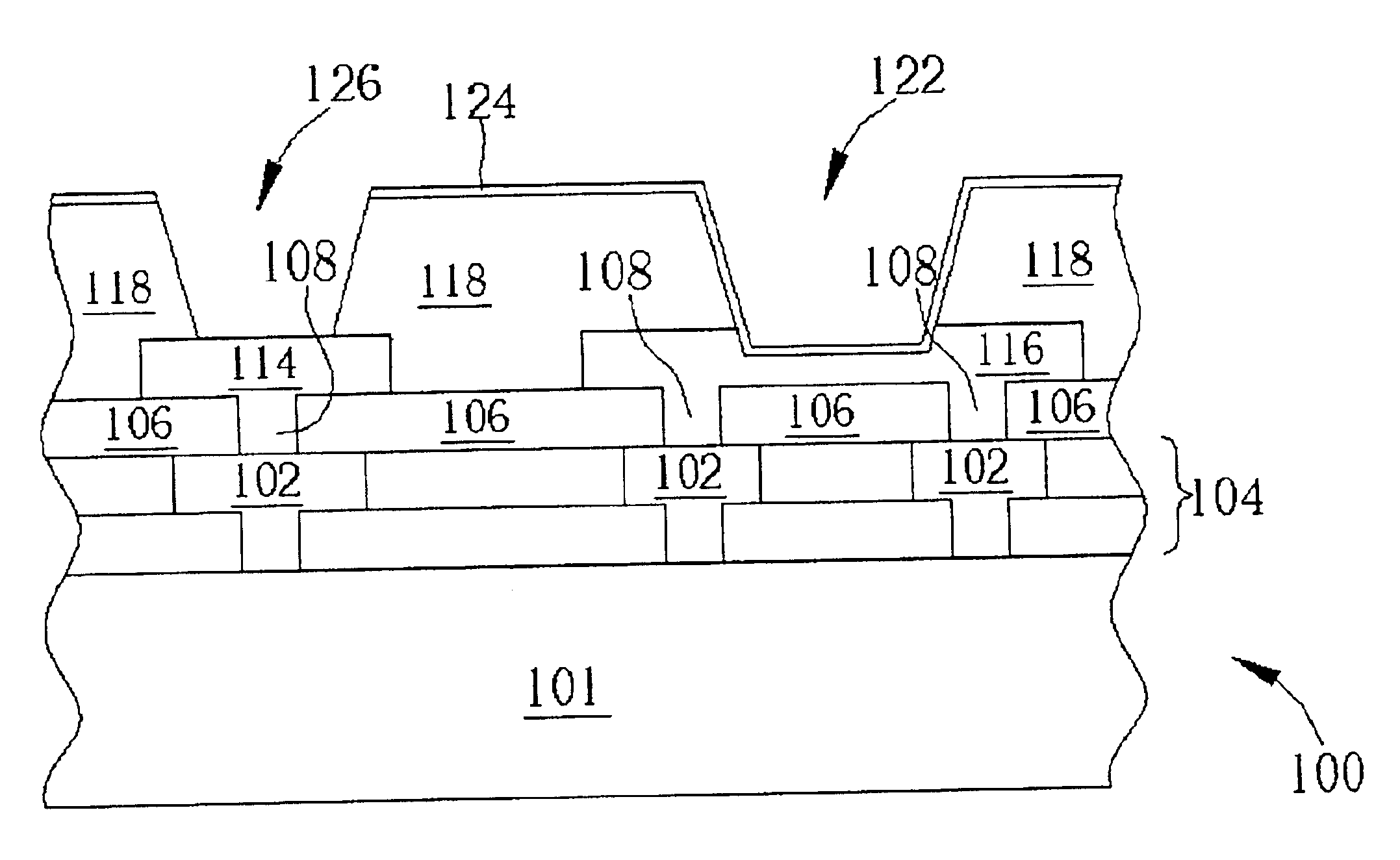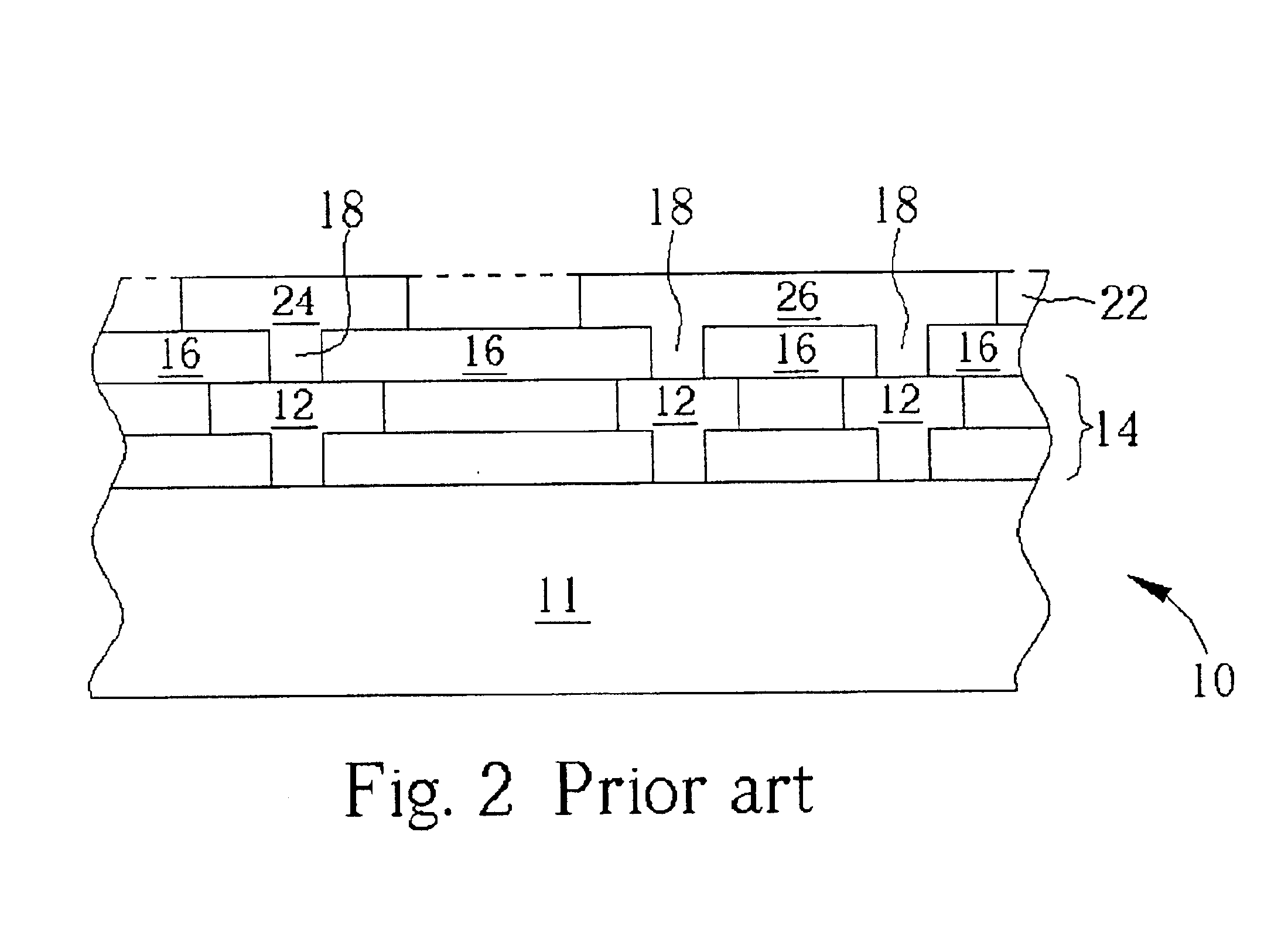Method of forming a fuse
a technology of fuse and insulating pad, which is applied in the direction of semiconductor devices, semiconductor/solid-state device details, electrical apparatus, etc., can solve the problems of poor step coverage ability, limiting factor of traditional al/sio/sub>interconnect system, and insatiable, so as to reduce the thickness of the fuse and improve the uniformity of the thickness , the effect of bondability of the bonding pad during the packaging process
- Summary
- Abstract
- Description
- Claims
- Application Information
AI Technical Summary
Benefits of technology
Problems solved by technology
Method used
Image
Examples
Embodiment Construction
Please refer to FIG. 5 through FIG. 9. FIG. 5 through FIG. 9 are schematic diagrams showing the formation of a fuse 116 on a semiconductor wafer 100 according to the present invention method. As shown in FIG. 5, the semiconductor wafer 100 comprises a silicon substrate 101. At least one memory cell (not shown) or at least one transistor (not shown) is formed on the silicon substrate 101. The present invention method is to form individual metal lines 102 on the silicon substrate 101 first. Different metal lines 102 are isolated by a first dielectric layer 104. The metal line 102 comprises a metal interconnection electrically connected to a conductive plug or a dual damascence structure conductor. The metal lines 102 are composed of aluminum or copper. In the case where aluminum is used, a continuous process including deposition, photolithography, and etching is utilized. In the case where copper is used, a dual damascence process is usually used.
As mentioned previously, aluminum is u...
PUM
 Login to View More
Login to View More Abstract
Description
Claims
Application Information
 Login to View More
Login to View More - R&D
- Intellectual Property
- Life Sciences
- Materials
- Tech Scout
- Unparalleled Data Quality
- Higher Quality Content
- 60% Fewer Hallucinations
Browse by: Latest US Patents, China's latest patents, Technical Efficacy Thesaurus, Application Domain, Technology Topic, Popular Technical Reports.
© 2025 PatSnap. All rights reserved.Legal|Privacy policy|Modern Slavery Act Transparency Statement|Sitemap|About US| Contact US: help@patsnap.com



